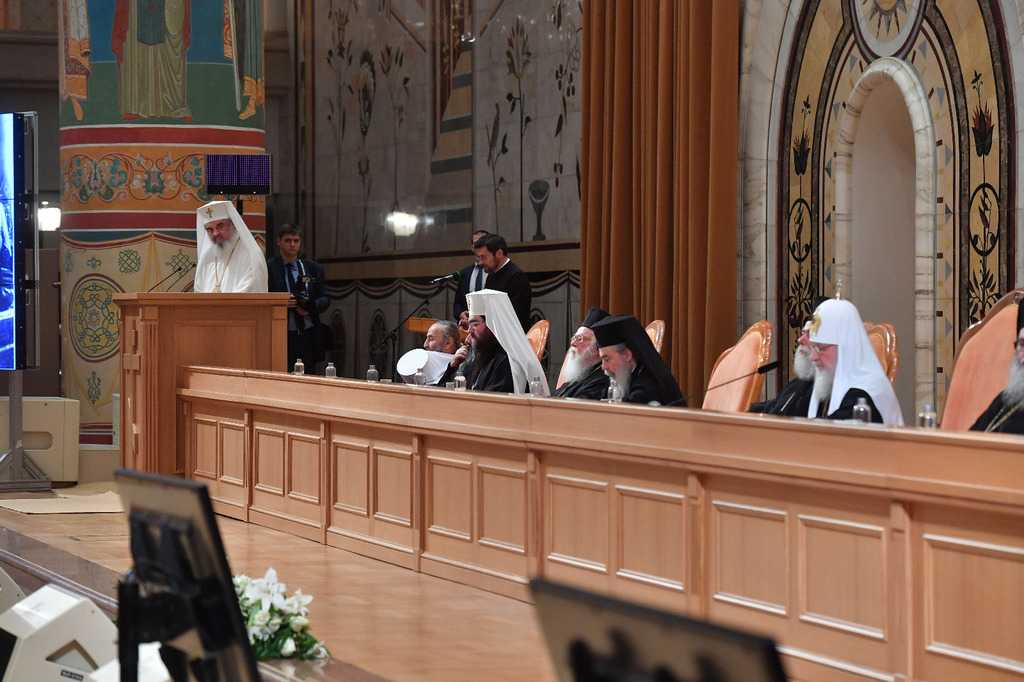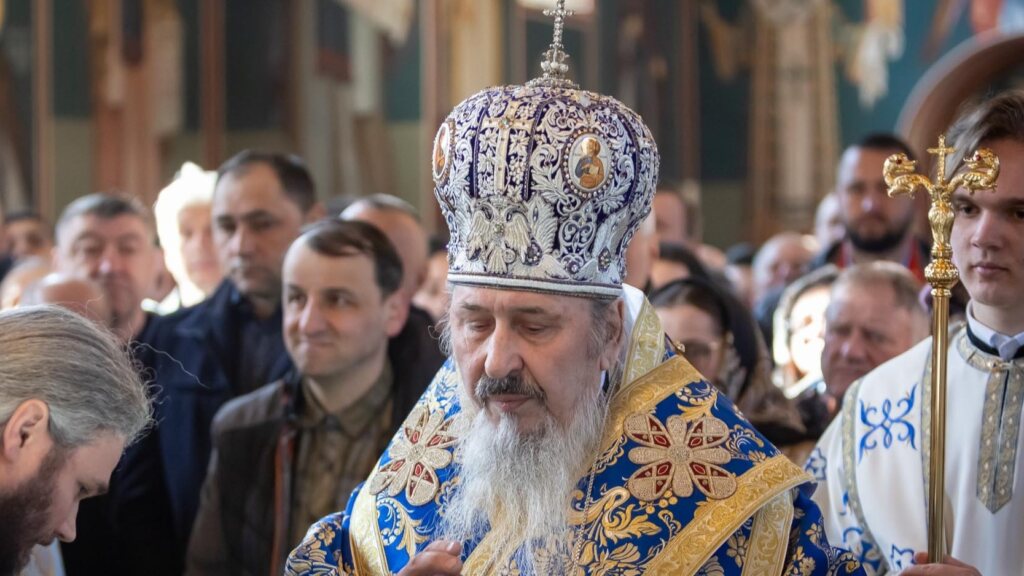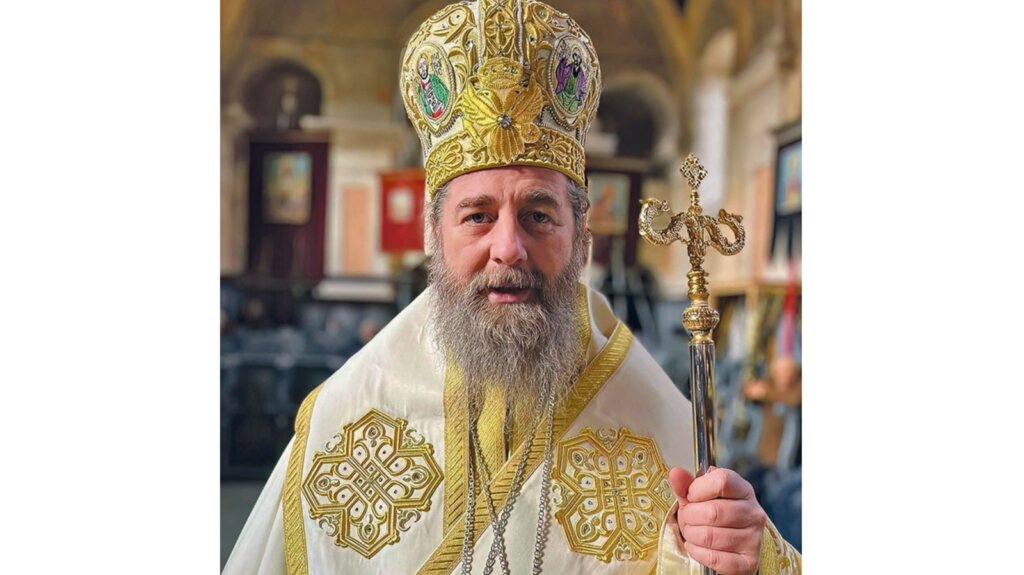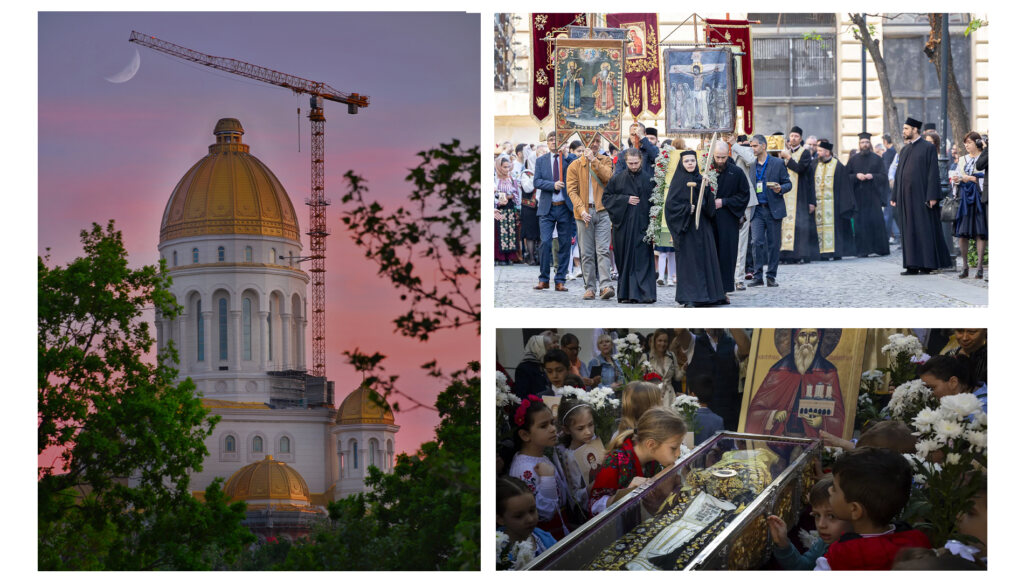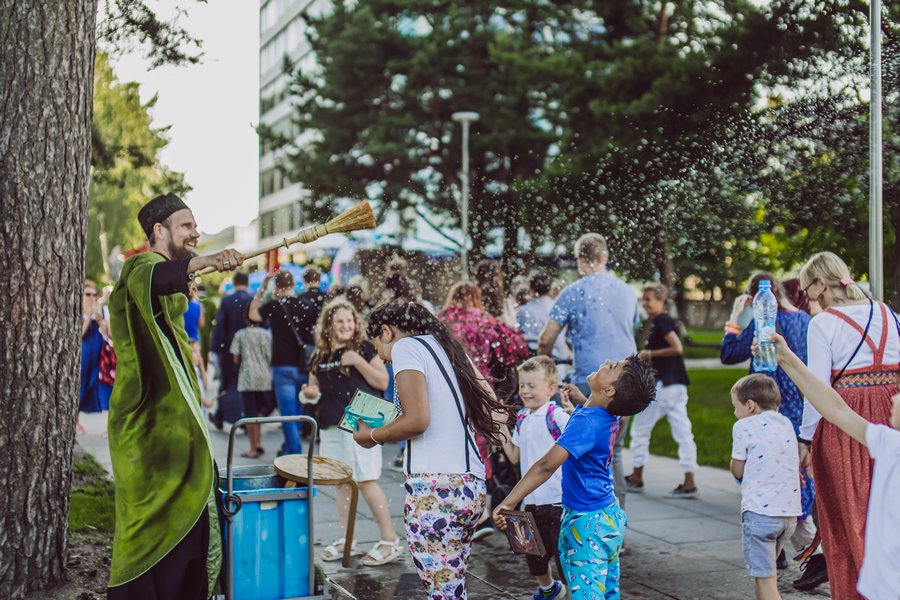Address of His Beatitude Daniel, Patriarch of the Romanian Orthodox Church, at the Solemn session with the participation of the Primates and Delegations of the Autocephalous Orthodox Churches, Moscow, 2 December 2017:
We are in Moscow today to mark together the 100th anniversary of the restauration of the patriarchate in the Russian Orthodox Church (1917-2017).
The patriarchate’s institution in the Church has its origins in the first Christian millennium, when the bishops of major cities of the Christian empire received the title of patriarch. This title reminds us about the biblical patriarchs, Abraham, Isaac, and Jacob, the spiritual and political parents and leaders of the Jewish people, Moses’ predecessors (cf. Exodus 3:15).
In the Orthodox Church, the title of patriarch and of patriarchate was introduced by a decision taken by the Fourth Ecumenical Council of Chalcedon in 451. After that, imperial constitutions or novels used the title of patriarchy or patriarchate for episcopal thrones in the cities: Rome, Constantinople, Alexandria, Antioch, and Jerusalem[1]. In the canonical tradition of the Church, the term patriarch was first used in the text of holy canons 2, 7 and 37 of the Council in Trullo (691-692)[2].
In the Russian Orthodox Church, the institution of patriarchate began in 1589, when Ecumenical Patriarch Jeremiah II came to Moscow and enthroned Metropolitan Job as Patriarch of Moscow and All Russia. However, in 1721 the Russian patriarchate was abolished by Tsar Peter the Great (1672-1725), and the Russian Orthodox Church was ruled by a synod consisting of 12 members (hierarchs and priests) appointed by the tsar. Starting with the following year, 1722, a high secular prosecutor (oberprocuror) was designated in the synod, as representative of the tsar. This new form of leadership of the Russian Orthodox Church was contrary to Orthodox canonical tradition, the tsar being in fact the ruler of the Church for almost 200 years (1721-1917). The patriarchate and the dignity of the patriarch as president of the Synod were restored only in 1917, when in Moscow, on 28 October 1917, a great local Council of the Russian Orthodox Church (564 participants: hierarchs, priests and lay people) restored the institution of the patriarchate in the Russian Orthodox Church, and on 5 November 1917, Metropolitan Tikhon was elected Patriarch of Moscow and All Russia.
The service of Patriarch Tikhon of Moscow and All Russia began in a very difficult period in the life of the Russian people: Russia was involved in the First World War, after having declared war on Germany, and internally, after the abdication of Tsar Nicholas II, the country was ruled by a provisional Government until the Bolshevik insurrection and civil war broke out. The dignity and responsibility of the Patriarch of Moscow and All Russia have been marked by much suffering because of the persecution against the Church by the Bolshevik regime. The years that followed the restoration of the patriarchate were years of hard trials for the entire Russian Orthodox Church: thousands of clergy and monks were killed, and thousands of churches were shut down or demolished until the beginning of the Second World War. After the end of this war, the persecution against the Church began also in other countries in Central and Eastern Europe where the atheist communist regime was established. Those who have then died for the faith must be commemorated with piety and respect.
HB Patriarch Daniel calls for fraternal communion and missionary co-responsibility between local Orthodox Churches.#Moscow #Sobor2017 pic.twitter.com/uKmUtZw3y1
— Basilica.ro (EN) (@BasilicaNews) 2 decembrie 2017
That is why, this year, 2017, also represents for the Romanian Patriarchate a moment of commemoration and gratitude for all those who suffered professing the faith during the atheist communist regime in Romania. Thus, we commemorate Patriarch Justinian Marina, a wise and diligent shepherd of the Romanian Orthodox Church between 1948-1977, 40 years after his passing to the Lord, as well as all the defenders of Orthodoxy during communism in the Romanian Patriarchate. Knowing the many sufferings of the Russian Orthodox Church during communism, Patriarch Justinian managed to avoid a direct confrontation with the communist regime in Romania and to alleviate its hostility against the Church. However, many priests suffered in prisons, and many monks and nuns were excluded from monasteries.
The tragic experience of Christian-Orthodox peoples in Eastern Europe in the 20th century was a hard trial for all those who professed the Orthodox faith at the cost of their lives. For this reason, on 27 October 2017, at the Patriarchal Cathedral in Bucharest under the liturgical leadership of His Beatitude Patriarch Kirill of Moscow and All Russia, the representatives of the sister Orthodox Churches from the countries of Eastern Europe who suffered during communism commemorated all the confessors and defenders of Orthodoxy during the communist persecution. It was a liturgical act of fraternal communion and great solemnity, followed on 28 October 2017 by a series of moving testimonies on the life of the sister Orthodox Churches during communist persecution.
Now, at this anniversary moment in Moscow, namely the centenary of the restoration of the Patriarchate of the Russian Orthodox Church, attended by representatives of all the sister Autocephalous Orthodox Churches, we are in a situation different from the period of the communist persecution, a period of freedom in confessing the faith, but also of a great pastoral responsibility in front of the new problems of the contemporary society. On the occasion of this solemn moment, we congratulate His Beatitude Patriarch Kirill of Moscow and All Russia, all the hierarchs, clergy, monks, nuns, and all the lay faithful of the Russian Orthodox Church for their many efforts to renew church life and for the active presence of the Church in the life of the Russian society, after almost a century of suffering caused by the persecution against religion in general and against the Russian Orthodox Church in particular.
At the same time, in today’s world marked by a process of rapid secularisation and also by religious pluralism, which is increasingly accentuated by the phenomenon of immigration, priority is given to: maintaining the unity in faith of Orthodoxy, cultivating solidarity with those who suffer, and practical missionary cooperation.
Although, during the communist persecution, freedom of social manifestation of faith was very limited, yet, many clergy and lay people discretely cultivated the inner or spiritual liberty of prayer in patience and hope, that is the freedom of crucified and humble love which prepared the victory of the resurrection, of the renewal of the Church life. Today, when we have more social freedom, we must use it to love God more and increase the missionary and philanthropic work of the Church in society.
† DANIEL
Patriarch of the Romanian Orthodox Church
[1] Cf. N. LOSSKY, art. “Patriarcat”, in Dictionnaire critique de théologie, 3ème édition, PUF, Paris, 2007, p. 1044.
[2] See L. STAN, “The Canonical and Legal Importance of the Fourth Ecumenical Council”, in Ortodoxia 3 (1951), p. 446. See also: M. CLÉMENT, “L’aparition du patriarcat dans l’Église (IVe-Ve siècles)”, in Proche-Orient Chrétien 16 (1966), pp. 162-173.
